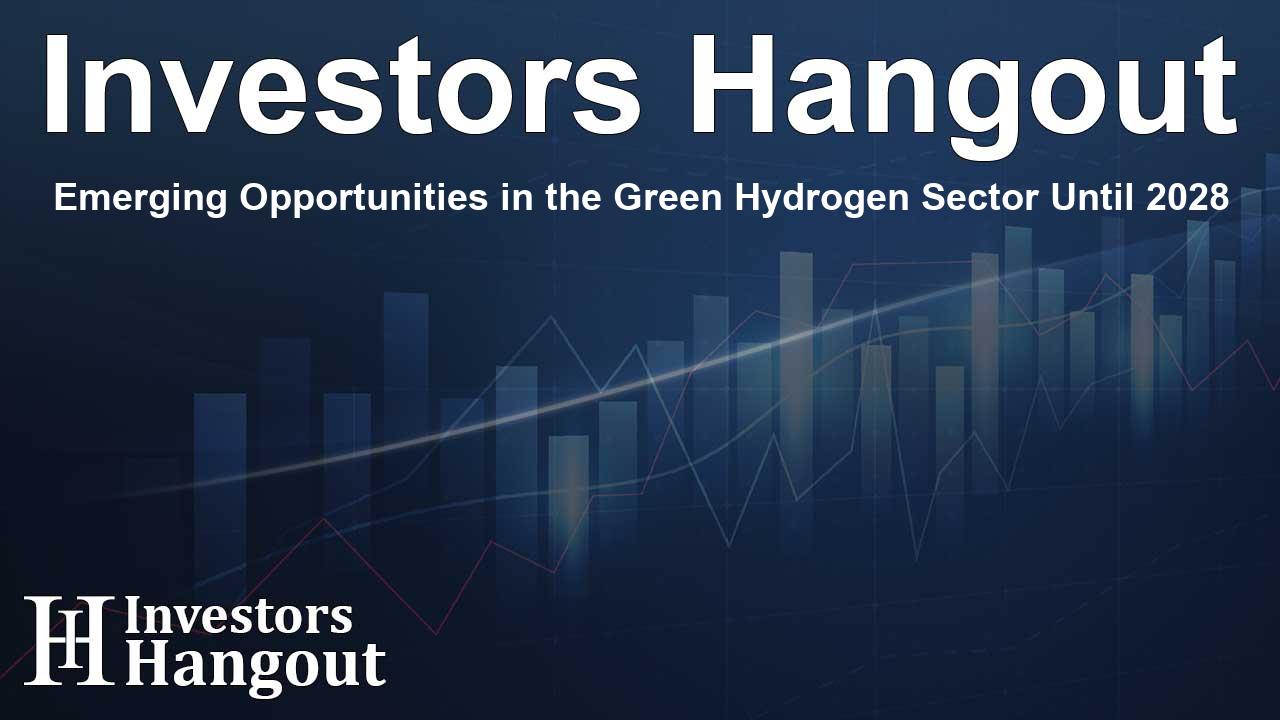Emerging Opportunities in the Green Hydrogen Sector Until 2028

Significant Growth Forecast in the Green Hydrogen Market
The green hydrogen market is on the brink of a transformation, anticipating a staggering growth of USD 46.25 billion from 2024 to 2028. This burgeoning market is evolving rapidly, showing a compound annual growth rate (CAGR) of 66.83% during this significant period. The drive towards clean energy adoption is propelling this market, with a notable shift to using clean hydrogen across various sectors, such as refineries and transportation. However, the journey is not without its hurdles, including high initial costs that could impede growth.
Recognizing Key Players in the Green Hydrogen Economy
Leading companies in the green hydrogen market exemplify the enthusiasm and investment necessary for fostering growth. Major entities in this innovative landscape include ACWA Power International, Air Liquide SA, Air Products and Chemicals Inc., and Ballard Power Systems Inc., among others. These companies are making substantial investments in advancing the technologies and infrastructure needed for widespread hydrogen adoption.
Innovative Solutions Powered by Renewable Resources
One of the pivotal aspects boosting the green hydrogen market is the integration of renewable energy sources. Companies like Air Liquide are pioneering investments in renewable liquid hydrogen, produced through excess energy from sources such as wind and solar. The process of electrolysis, which employs alkaline and Proton Exchange Membrane (PEM) electrolyzers, is central to this production method, separating hydrogen from water effectively.
Growth Drivers and Market Segmentation Insights
As governments and businesses actively pursue cleaner energy solutions, market drivers include supportive policies and regulations targeting de-carbonization. This global movement towards a sustainable hydrogen economy is evident in various applications, such as transportation, power generation, and even domestic heating. Hydrogen is increasingly regarded as a versatile energy carrier that can transition industries away from fossil fuel dependency.
Challenges Facing the Green Hydrogen Industry
Despite the optimistic market outlook, challenges remain significant. The production of green hydrogen can sometimes be less economically feasible compared to traditional energy sources. The substantial initial setup costs mean that, on average, green hydrogen costs two to three times more than grey hydrogen derived from natural gas. Consequently, industries such as steel and fertilizer production are cautious about adopting green hydrogen due to these economic implications.
There are additional considerations, such as transportation efficiency and environmental concerns, which continue to persist. This challenge opens doors for alternative solutions, including natural gas-hydrogen fuel mixtures that could mitigate some production costs while promoting cleaner energy solutions.
Exploring Applications and Future Prospects
The refining and chemical industries are among the primary consumers of hydrogen, utilizing it for improving fuel quality by removing impurities and refining crude oil. Initiatives like the European REFHYNE project have illustrated the feasibility of using renewable hydrogen in refineries to cut down greenhouse gas emissions significantly. The momentum for clean hydrogen in various applications, including heating, aviation, and even space applications, supports the argument for a robust future in this market.
Market Segmentation Overview
Investors and stakeholders are exploring several key segments driven by technology, geography, and end-user applications:
- End-user Sector: Chemical, Power, Industrial, and Others are critical segments in utilizing green hydrogen.
- Technology Utilized: The market is driven predominantly by alkaline and PEM electrolyzers.
- Geographical Focus: The market shows prominent activity in regions like APAC, Europe, and North America.
Frequently Asked Questions
What is the estimated growth of the green hydrogen market?
The green hydrogen market is projected to grow by USD 46.25 billion from 2024 to 2028, with a CAGR of 66.83%.
Who are the main players in the green hydrogen market?
Key players include ACWA Power International, Air Liquide SA, Air Products and Chemicals Inc., and Ballard Power Systems Inc.
What are the significant challenges facing the market?
Major challenges include high initial costs and production feasibility compared to grey hydrogen.
What applications is green hydrogen used for?
Green hydrogen is used in transportation, power generation, heating, and refining processes.
How is AI influencing the green hydrogen market?
AI is transforming market trends by optimizing processes and improving production efficiencies, making hydrogen a competitive energy source.
About The Author
Contact Ryan Hughes privately here. Or send an email with ATTN: Ryan Hughes as the subject to contact@investorshangout.com.
About Investors Hangout
Investors Hangout is a leading online stock forum for financial discussion and learning, offering a wide range of free tools and resources. It draws in traders of all levels, who exchange market knowledge, investigate trading tactics, and keep an eye on industry developments in real time. Featuring financial articles, stock message boards, quotes, charts, company profiles, and live news updates. Through cooperative learning and a wealth of informational resources, it helps users from novices creating their first portfolios to experts honing their techniques. Join Investors Hangout today: https://investorshangout.com/
The content of this article is based on factual, publicly available information and does not represent legal, financial, or investment advice. Investors Hangout does not offer financial advice, and the author is not a licensed financial advisor. Consult a qualified advisor before making any financial or investment decisions based on this article. This article should not be considered advice to purchase, sell, or hold any securities or other investments. If any of the material provided here is inaccurate, please contact us for corrections.
